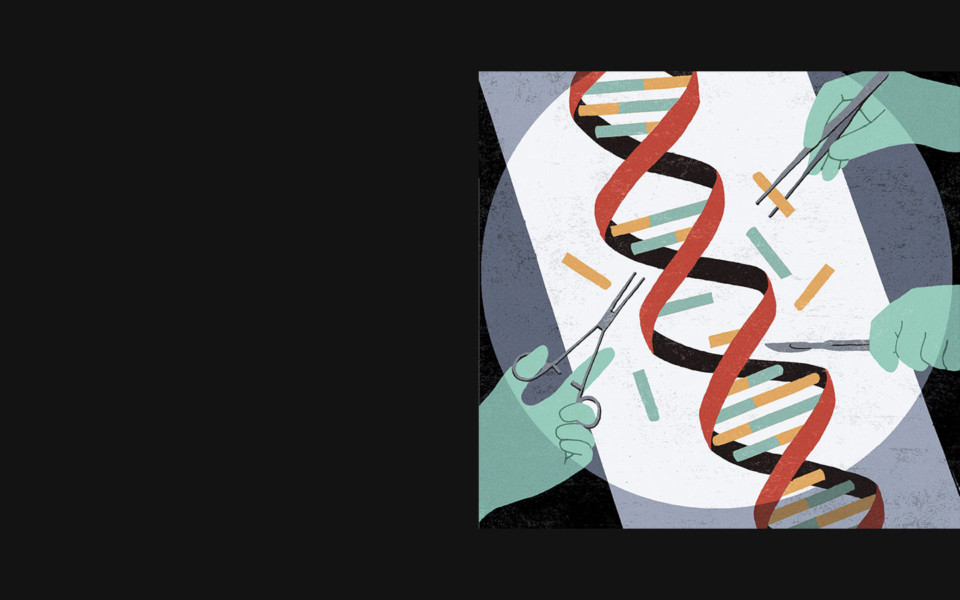The CRISPR Antidote
Scientists hacked the machinery of cellular warfare to splice genes. Now they’ve found a way to guard against it, too.
An arms race is playing out inside your body. It’s part of an invisible war that’s raged for billions of years. When viruses hunt and infect bacteria, the bacterial survivors store pieces of their vanquished foes — DNA snippets — within their genomes so that next time, they can detect and defend against the attack. In response, viruses evolve their own counterattack.
The bacteria’s natural defense system is called CRISPR-Cas9. And in 2012, biochemist Jennifer Doudna, together with French microbiologist Emmanuelle Charpentier, upended genetics with an ingenious idea. What if scientists could exploit CRISPR as a gene-editing tool? Since then, Doudna and others have hacked these cellular weapons in an effort to treat diseases and create stronger crops. Now scientists are attempting another task: avoiding unintended mutations resulting from their gene edits.
To grasp the tool’s precision, imagine the letters of a genome — G, A, T, C — typed into a stack of books dozens of stories high. A guide RNA shepherds Cas9 — which acts like a pair of DNA scissors — to the right spot, where it zooms in on just 20 letters and lets scientists change a few…


